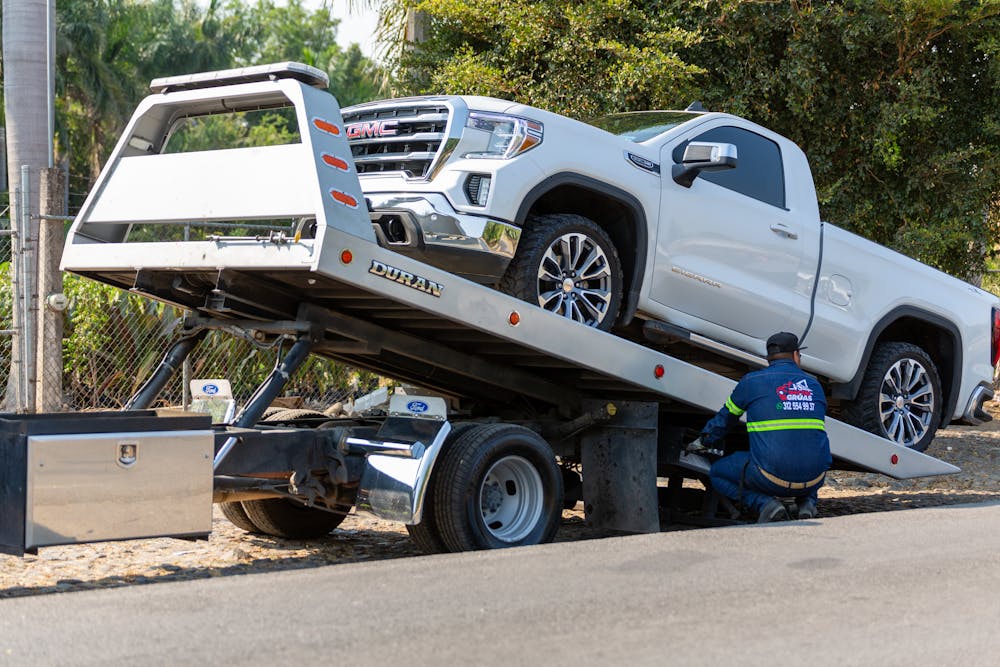Reviews
How Do I Know If My Car Was Repossessed?

Walking out and finding your car gone can be jarring. In that moment, your mind races: was it stolen, towed, or how do I know if my car was repossessed? If you’ve missed car payments or fallen behind on your loan, repossession is a real possibility. It doesn’t happen at random. It follows patterns, and if you know what to look for, you can recognize it early and respond before the situation gets worse.
How to Know If Your Car Has Been Repossessed – First Signs to Watch For
One of the clearest signs is the complete lack of damage at the scene. There’s no broken glass, no evidence of forced entry. The space where the car was parked is just empty. In most states, lenders don’t need to give advance notice before taking a vehicle. If the loan is in default, they’re often allowed to act without warning. But they’re required to notify you after the fact.
Usually, that means you’ll receive a letter a few days later. The letter should explain why the car was taken and outline what happens next. If you’ve missed several payments or stopped responding to the lender’s calls, this letter may be the first formal communication in a while.
Check your recent mail and email, too. Some lenders send digital notifications or place temporary holds on your account before moving forward. If your account was behind and your vehicle is gone without a trace, how to know if your car has been repossessed becomes clearer.
How Do I Know If My Car Was Repossessed or Just Towed?
When a car disappears from a parking space, one of the first things to clarify is whether it was legally removed. If you were parked in a restricted zone or in violation of city rules, towing is a real possibility. Start by calling your local police department or the city’s towing hotline. Most municipalities require tow operators to report their activity immediately.
If no tow was reported and your lender hasn’t been in touch, try contacting them directly. A repossession usually gets logged on your loan file quickly, and a representative should be able to confirm what happened. Ask for a written explanation of your account status. This document will help you figure out the next steps and determine what options are still available.
How to Find a Repossessed Car – Tracking Your Vehicle After Repossession
In case the vehicle is already gone and you suspect repossession, the fastest way to confirm its location is to call your lender. Don’t guess. Ask them directly where the vehicle was taken and who now has possession of it. Most repossessions are handled by third-party companies, and the lender is required to tell you where the car is stored.
You won’t find this information in an app or through GPS most of the time. Once the lender takes control, remote access is usually shut off. Instead, look for any paperwork you’ve received from the lender – especially post-repossession notices. These documents often include the name of the storage facility or at least a contact number. If you didn’t get a notice, ask for one. This is the most direct way to find my repo car and understand what comes next.
How Do Repos Find Cars – What You Should Know About GPS, Skips, and Surveillance
How do repos find cars? Not by luck. They use a combination of technology and research. In many cases, they start with your address, workplace, and prior locations where the car has been serviced or parked. From there, they use license plate scanners, skip tracing software, and sometimes even social media to narrow down the vehicle’s location.
Some cars have built-in GPS trackers, especially if the loan was from a dealership offering in-house financing. If you agreed to it in your contract, a device might already be in the vehicle. With or without GPS, repo agents may visit known addresses or wait nearby. It’s all done within legal limits, but the level of detail might surprise you.
How to Know Who Repossessed My Car – Contacting the Right Agencies or Lender
There’s no guesswork here. Someone authorized the repossession, and there is a clear trail. If you’re wondering how to know who repossessed my car, the lender is your first stop. They must provide details about the repossession, including the company that handled it and where the car was taken. This information is a legal requirement.
Most lenders outsource repossession to licensed agents who must follow strict protocols. If you’ve missed communication, check your mail and email – formal notice is typically sent within days. In some cities, the local police or impound lot can also confirm the vehicle’s status.
When you speak with the lender, ask when the car was taken, who has it, and how you can retrieve personal items or reinstate the loan. Knowing this early can save you both time and stress.
Stop Repossession Before It Happens – Legal and Financial Prevention Steps
Repossession is often the final step in a series of missed opportunities. If you’re behind on payments, the moment to act is now. Ignoring the signs only narrows your options. Preventing repossession is not just about catching up. It’s about understanding your rights and using available solutions before action is taken.
Direct negotiation can work. Lenders may agree to modify terms, defer payments, or create a new schedule. Repossession is rarely their first choice. In more serious situations, legal protection may be available. Filing for bankruptcy can activate an automatic stay, which halts repossession instantly. Chapter 13, in particular, may allow you to repay what’s owed through a structured plan.
If you’re looking for ways to stop repossession, timing is everything. Acting before the car is taken gives you access to legal tools that may not be available later.
Repossession Feels Sudden, But There Are Always Warning Signs
Losing your car this way is deeply disruptive. But in most cases, there were clear indicators in advance: missed payments, warning letters, silence from your lender. None of these happen randomly. They point to an action you still have time to intercept.
If the car is already gone, confirm the status quickly. Talk to your lender, check with local authorities, review all recent notices. If you’re asking how to find a repossessed car, act on facts, not fears. Every step you take to clarify what happened opens new ways to respond. Repossession changes your mobility, but legal and financial solutions are still within reach.

-

 World1 week ago
World1 week agoEthiopian volcano erupts for first time in thousands of years
-

 Health2 days ago
Health2 days ago8 kittens die of H5N1 bird flu in the Netherlands
-

 Legal7 days ago
Legal7 days agoUtah Amber Alert: Jessika Francisco abducted by sex offender in Ogden
-

 US News6 days ago
US News6 days agoExplosion destroys home in Oakland, Maine; at least 1 injured
-

 Health6 days ago
Health6 days agoMexico’s September human bird flu case confirmed as H5N2
-

 Legal3 days ago
Legal3 days ago15 people shot, 4 killed, at birthday party in Stockton, California
-

 World7 days ago
World7 days agoWoman killed, man seriously injured in shark attack on Australia’s NSW coast
-

 Health6 days ago
Health6 days agoMarburg outbreak in Ethiopia rises to 12 cases and 8 deaths




